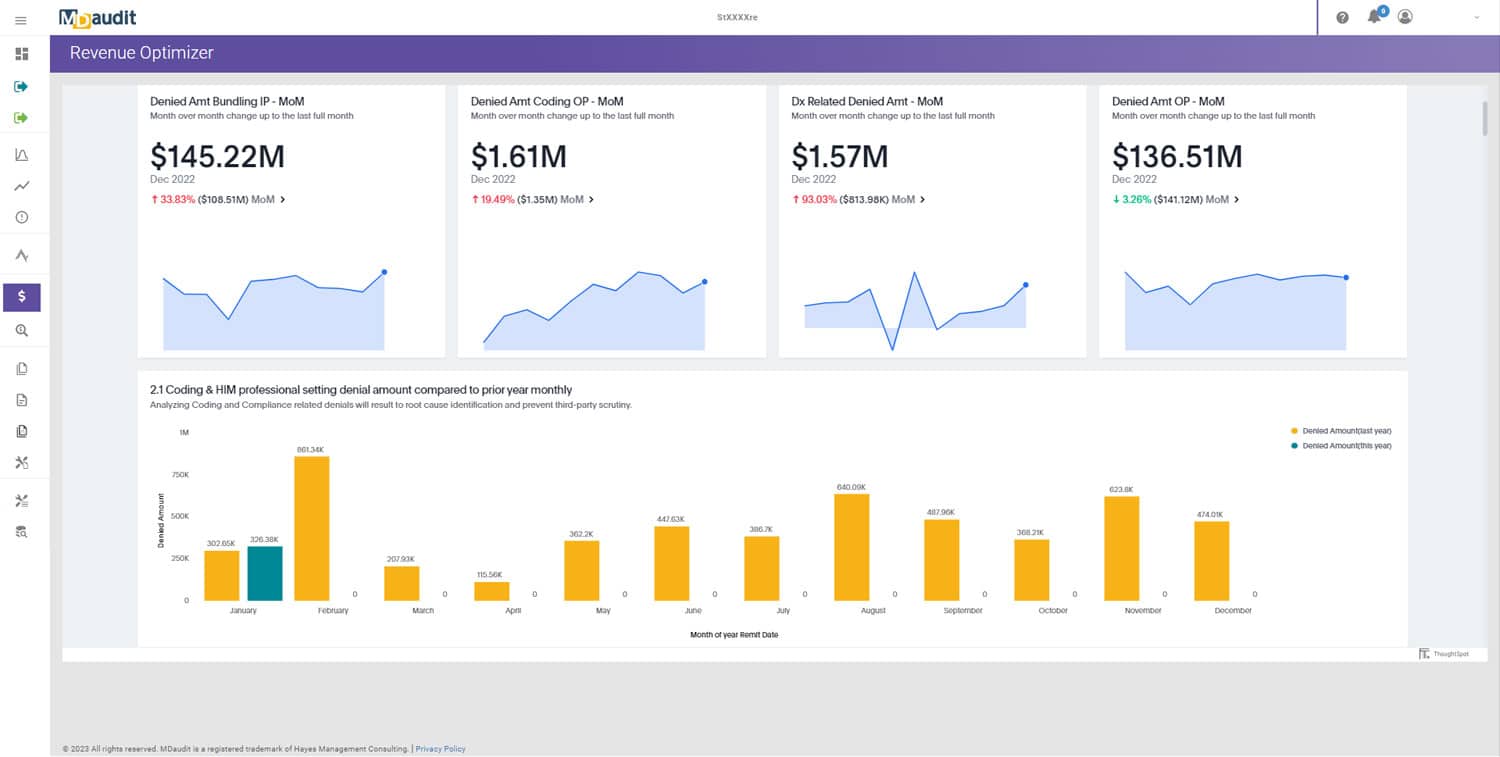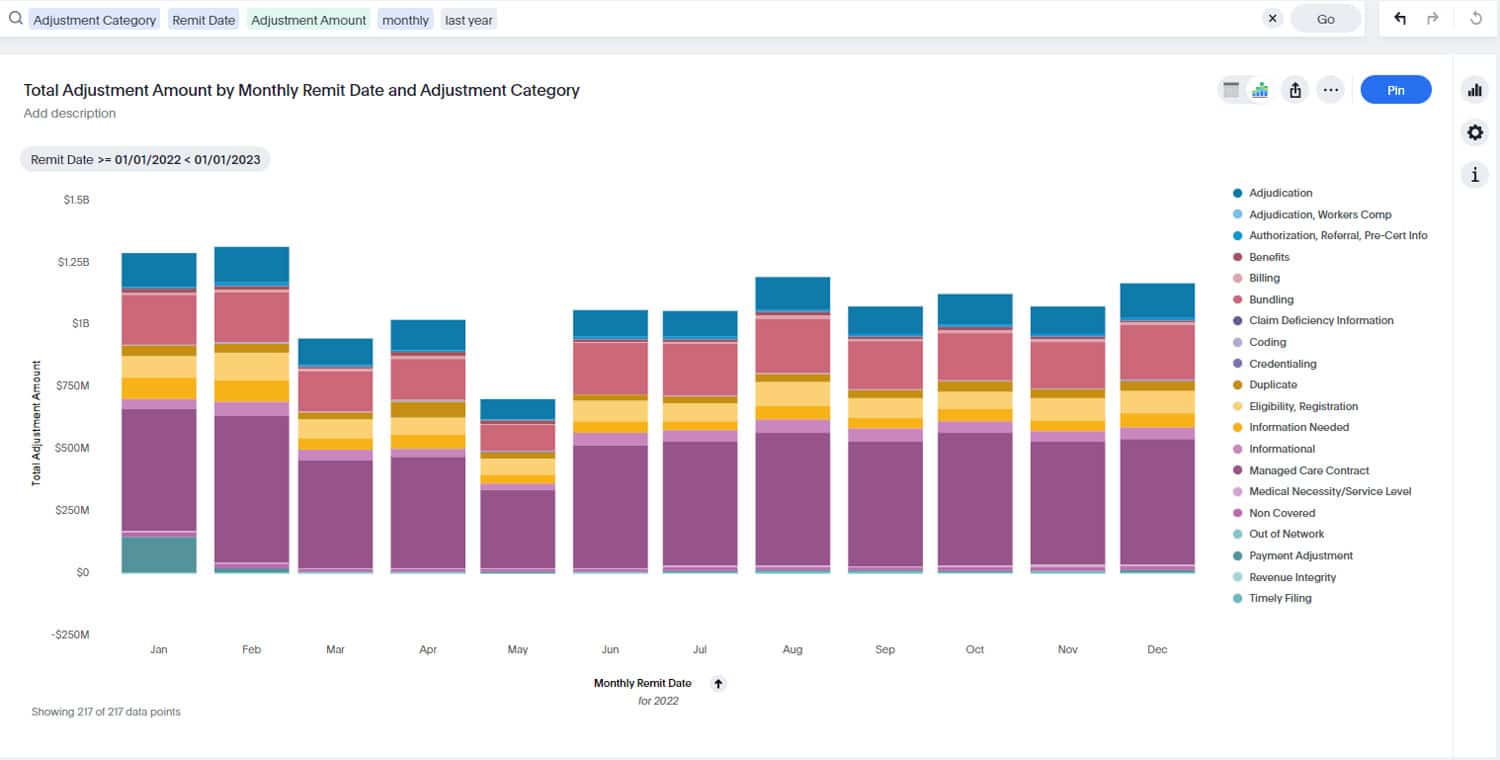In 2025, healthcare organizations face evolving payer dynamics that demand new strategies in revenue integrity and compliance. As payers adopt more aggressive denial tactics, shift site-of-care requirements, and refine utilization policies, providers who rely on yesterday’s audit models will lag behind. To stay ahead, you need to read not just claims data, but patterns—interpreting them to anticipate payer shifts rather than merely respond.
At MDaudit, our Denial Risks and analytic tools surface these patterns. In this post, we explore the top payer behavior trends emerging in 2025, what they mean for compliance and reimbursement, and how organizations can adapt with agility.
Emerging Trends in Payer Behavior
1. Denial Precision Over Volume
Payers are increasingly moving from broad denials to precision denials, focusing on specific service lines, diagnostic codes, or site-of-care criteria. Rather than denying large swaths of claims broadly, their data models now pick “edge cases” with nuance—mismatches in documentation, minor lapses in specificity, or new policy interpretations.
This means organizations can no longer rely on sweeping audit coverage. They must monitor trends at a granular level, comparing payer behavior against peer norms to identify which carriers are pushing the boundaries.
2. Policy Drift in Ambiguous Clinical Areas
Areas like chronic disease management, behavioral health, and post-acute care are seeing policy drift. Some payers are applying stricter criteria on home health, telemonitoring, or remote patient monitoring. That drift may not hit all providers equally, so detecting it early requires cross-payer comparison.
3. Site-of-Care Scrutiny Intensifies
More payers are enforcing policies that move infusion therapies, imaging, and outpatient procedures out of hospital outpatient departments. Claims that once paid now face denial scrutiny based on clinical justification and setting. Providers must document not just what was done, but why it was clinically appropriate. 4. Elevated Appeal Denial Thresholds
Payers are pushing back harder on appeals. Even claims overturned in the initial appeal may fail at higher tiers or external review. That increases the importance of clean claims—fewer appeals needed, and more defensible documentation from the start.
5. Payer Differentiation Intensifies
Payers within the same market are diverging more than ever. One commercial carrier may deny certain cardiac imaging aggressively, while another reimburses consistently. These mismatches give savvy providers negotiating leverage—but only if they have the data to prove it.
6. Denial “Echoes” Across Payers
As payers track each other, a denial tactic from one carrier often echoes through others after a period. For example, when one begins denying certain specialty pharmacy claims aggressively, others may follow. Detecting those early “echoes” helps providers defend before the wave hits.
7. Data-Driven Recoupment Audits
Beyond denials, payers are intensifying recoupment audits based on AI-driven predictive models. They mine large datasets to identify patterns that suggest overpayment. Providers must build defensible audit trails to push back effectively.
What These Trends Demand from Providers
Move from Reactive to Predictive
Traditional audit programs typically trigger when denials have already occurred. In 2025, providers must detect payer intent before denials appear—using indicators like volume shifts, policy changes, or anomaly clustering.
Embrace Cross-Payer Benchmarks
To spot policy outliers, you need market context. Compare denial rates, upcoding patterns, and recoupment audit behavior across payers. A carrier that consistently denies a service that others accept is an outlier worth interrogating.
Focus on Documentation That Defends
Documentation must not just support coding, but defend against policy challenges. Clinical rationale, decision pathways, and comparator evidence—all need to be captured proactively. CDI (Clinical Documentation Improvement) and coding teams must be tightly aligned to surface those details in the record.
Build Escalation Playbooks
When a payer pushes too far—changing policy without notice or applying inconsistently—you must be prepared to escalate. That means having data-backed narratives: multi-year denial trends, peer payer comparisons, and financial impact.
Automate Escalation Signals
Behavioral AI can help here. When a payer begins trending above benchmark levels, the system should flag it automatically. That gives compliance and managed care teams early warning to intervene.
How MDaudit Supports Trend Detection
Normalized Denial Taxonomy
Revenue Optimizer normalizes denial codes across payers so trends are comparable. It removes labeling noise and surfaces underlying behaviors.
Cross-Payer Benchmarking
By comparing carriers side by side, the platform helps identify which payers are diverging. That insight supports both internal education and external negotiation.
Predictive Modeling
Denials Predictor and behavioral AI models forecast which providers or service lines may be targeted next. The model learns from payer behavior and historical denials to anticipate future hotspot areas.
Escalation Triggers
When a payer’s denial pattern drifts beyond expected variance, the system flags it for review. Compliance teams can allocate attention quickly rather than waiting for denials to escalate.
Integrated Dashboards
Trends need visibility. Dashboards let leadership see denial shifts by payer, service line, and time. They can drill into anomalies, compare payers, and assign follow-up work automatically.
Scenarios Illustrating 2025 Payer Behavior
Cardiology Imaging Delay
One provider notices increasing denials for outpatient cardiac MRI from one commercial carrier. Peer payers continue paying. Cross-payer analytics singles out the outlier, documentation triggers are added (clinical justification, referencing guidelines, alternative modalities), and the denial rate stabilizes.
Infusion and Specialty Drug Shifts
A payer begins imposing stricter diagnostic specificity rules for infusions. Predictive models detect early upticks; CDI and coding create new documentation templates, including justification for dose escalation. Denials flatten before volume loss appears.
Rehabilitation and Home Health
Payers experimentally deny post-acute care claims, citing a lack of measurable improvement. Cross-payer comparison reveals inconsistency across plans. Providers escalate to contracts and gain clarifications using documented evidence.
Multi-Payer Recoupment Pattern
Recoupment audits hit high-cost providers within a region. Behavioral triggers flag that pattern locally, and providers assemble audit history to contest the trend using payer comparison metrics and coding defense.
Best Practices for Acting on Trend Signals
- Triage Signals Early
Don’t treat every deviation as a crisis. Use data thresholds (e.g., two standard deviations from the peer mean) to filter actionable trends. - Drill Down Quickly
Once a trend is flagged, isolate the provider, service, and denial category. Decide if it’s documentation, coding, or policy-driven. - Deploy Micro-Interventions
For low-hanging fruit (e.g., missing modifiers, lack of documentation specificity), deploy small education or template fixes. - Escalate When Needed
Maintain escalation paths for payer-level pushback. Bring in managed care teams with comparative analytics and financial impact. - Monitor After Intervention
Track the effect of each intervention and adjust models if a changed policy shifts the pattern. - Institutionalize Learning
When a trend recedes, archive the lessons as playbooks for other departments and services.
Looking Ahead
As payers grow more data-savvy, providers must learn to be equally nimble. In 2025 and beyond, the winners won’t be those who deny the most or audit the hardest—they’ll be those who anticipate, adapt, and defend with precision.
Implementing behavioral AI, integrating cross-payer trends, and embedding escalation systems turn compliance from a cost center into a strategic capability. MDaudit is uniquely positioned to support this shift—combining analytics, workflow automation, and pattern recognition into a platform that helps organizations stay one step ahead.
To explore how payer behavior trends can inform your compliance roadmap, or to see the system in action, visit our demo request page or contact us.









